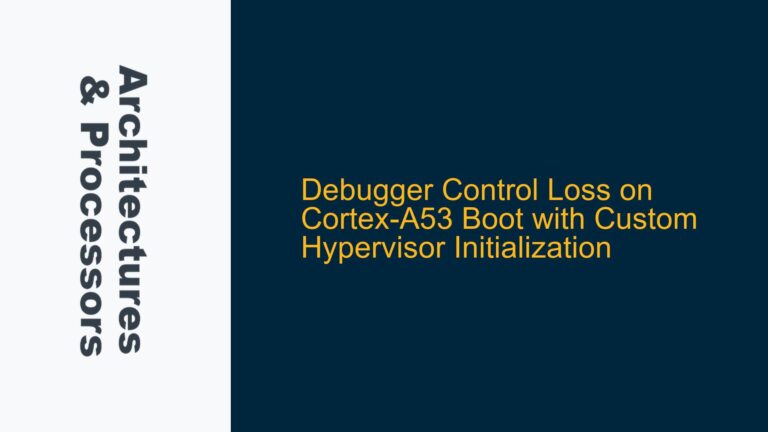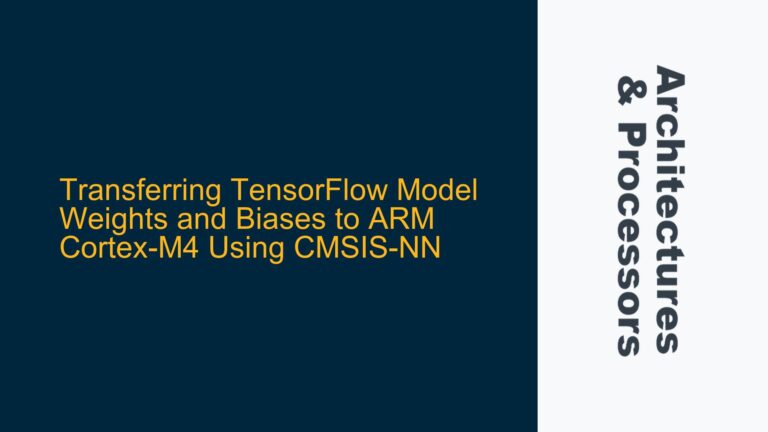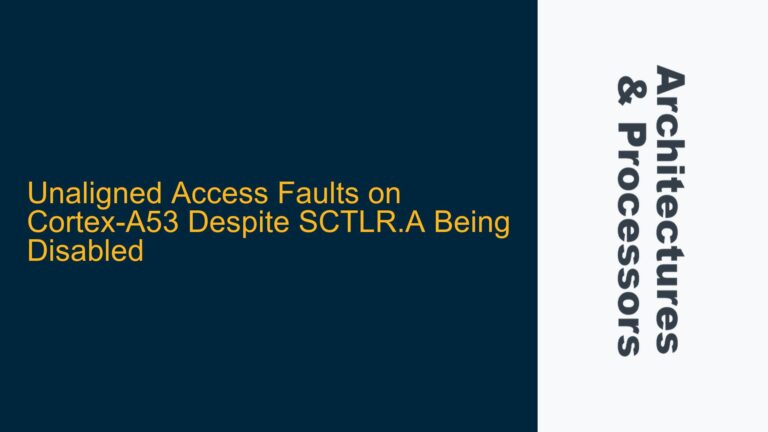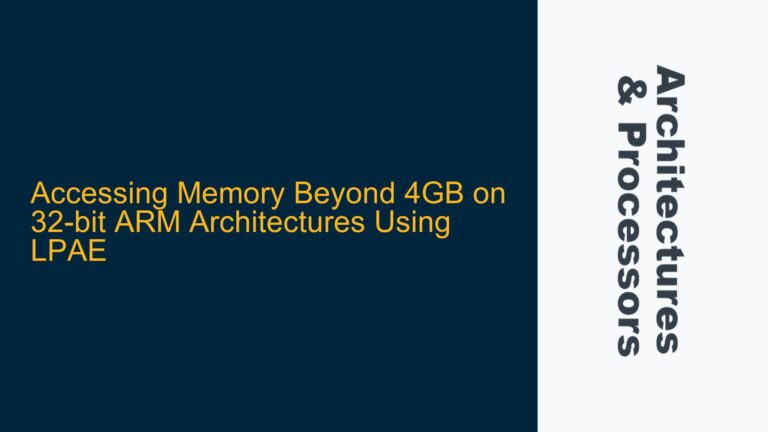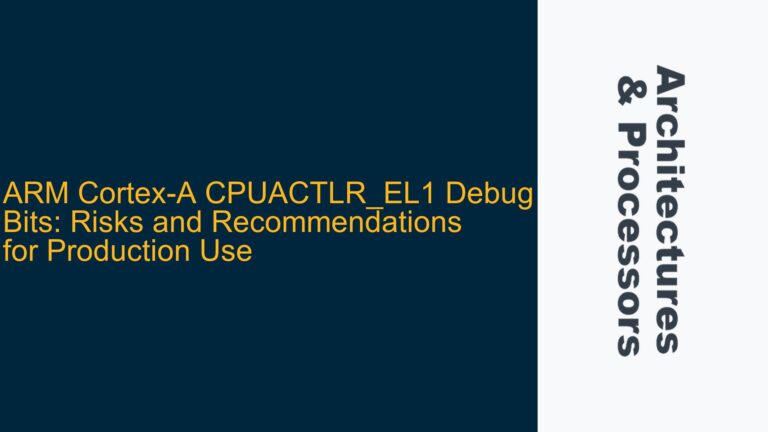Cortex-R52 MCU Development: Missing CMSIS Support and Project Initialization Challenges
The Cortex-R52 core, designed for real-time and safety-critical applications, presents unique challenges when establishing a new MCU engineering project. Developers often face difficulties in locating the appropriate CMSIS (Cortex Microcontroller Software Interface Standard) files, setting up a basic project in Eclipse, and compiling the project using GCC. The absence of readily available startup files (startup_ARMxx.s) and system initialization files (system_ARMxx.c) further complicates the process. These files are critical for initializing the Cortex-R52 core, configuring the memory map, and setting up the runtime environment.
The Cortex-R52 core, being part of the Cortex-R series, is optimized for high-performance real-time systems with features like dual-core lockstep, error correction codes (ECC), and advanced interrupt handling. However, these features require specific initialization routines that are not always well-documented or readily available in standard CMSIS packages. Developers must often manually adapt CMSIS files from other Cortex-R cores or create custom implementations tailored to the Cortex-R52.
The lack of MCU engineering templates for the Cortex-R52 exacerbates the issue, as developers are left without a reference implementation to guide their project setup. This is particularly problematic for those new to the Cortex-R series, as the core’s advanced features and safety mechanisms require precise configuration to ensure reliable operation.
Missing CMSIS Files and Inadequate Documentation for Cortex-R52
One of the primary causes of the challenges in establishing MCU engineering with the Cortex-R52 is the absence of CMSIS files specifically tailored for this core. While CMSIS provides a standardized hardware abstraction layer for ARM Cortex processors, the support for newer or less common cores like the Cortex-R52 is often lagging. This forces developers to rely on generic CMSIS files or those designed for other Cortex-R cores, which may not fully account for the Cortex-R52’s unique features.
The Cortex-R52’s dual-core lockstep capability, for example, requires specific initialization routines to ensure both cores are synchronized and operating correctly. Generic CMSIS files may not include these routines, leading to potential runtime issues. Similarly, the Cortex-R52’s memory protection unit (MPU) and cache configuration require precise setup, which is often not covered in detail in standard CMSIS documentation.
Another contributing factor is the lack of comprehensive documentation for the Cortex-R52’s startup and system initialization processes. The startup_ARMxx.s file, responsible for setting up the stack, initializing the vector table, and configuring the core’s registers, is often missing or incomplete for the Cortex-R52. This file is critical for ensuring the core boots correctly and enters the main application code without issues. Without a proper startup file, developers may encounter hard-to-debug problems such as incorrect stack initialization or misconfigured interrupt vectors.
The system_ARMxx.c file, which handles system clock configuration, peripheral initialization, and other runtime setup tasks, is also often absent or inadequately documented for the Cortex-R52. This file is essential for ensuring the core operates at the correct frequency and that peripherals are properly initialized before the main application code runs. Without a well-defined system initialization file, developers may face issues such as incorrect clock speeds, uninitialized peripherals, or unstable system behavior.
Setting Up Cortex-R52 MCU Engineering: CMSIS Adaptation, GCC Compilation, and Eclipse Configuration
To address the challenges of establishing MCU engineering with the Cortex-R52, developers must take a systematic approach to project setup, CMSIS adaptation, and toolchain configuration. The following steps outline a comprehensive process for creating a functional Cortex-R52 project in Eclipse using GCC.
Step 1: Acquiring and Adapting CMSIS Files for Cortex-R52
The first step is to obtain the necessary CMSIS files for the Cortex-R52. While ARM provides a generic CMSIS package, developers may need to adapt files from other Cortex-R cores or create custom implementations. The key files required include startup_ARMxx.s, system_ARMxx.c, and the core-specific header files.
The startup_ARMxx.s file should be modified to include the Cortex-R52’s specific vector table and initialization routines. This includes setting up the stack pointer, initializing the MPU, and configuring the core’s registers. Developers should refer to the Cortex-R52 Technical Reference Manual (TRM) for detailed information on the core’s initialization requirements.
The system_ARMxx.c file should be adapted to configure the Cortex-R52’s system clock, peripherals, and other runtime settings. This includes setting up the PLL, configuring the memory map, and initializing any safety features such as dual-core lockstep. Developers should ensure that the system initialization code is tailored to the specific requirements of the Cortex-R52, as generic implementations may not account for the core’s advanced features.
Step 2: Configuring the GCC Toolchain for Cortex-R52
Once the CMSIS files are in place, the next step is to configure the GCC toolchain for Cortex-R52 compilation. This involves setting up the appropriate compiler flags, linker script, and startup code.
The compiler flags should be configured to target the Cortex-R52 architecture, enable the necessary features such as Thumb-2 instruction set, and optimize for performance or size as required. The following flags are commonly used for Cortex-R52 compilation:
-mcpu=cortex-r52 -mthumb -mfpu=fpv4-sp-d16 -mfloat-abi=hard -O2
The linker script should be tailored to the Cortex-R52’s memory map, specifying the location of the stack, heap, and other memory regions. Developers should ensure that the linker script accounts for any specific memory requirements of the Cortex-R52, such as the placement of the vector table or the configuration of the MPU.
The startup code should be integrated into the project, ensuring that the core is properly initialized before the main application code runs. This includes setting up the stack pointer, initializing the vector table, and configuring the core’s registers. Developers should verify that the startup code is correctly linked and that the core enters the main application code without issues.
Step 3: Setting Up the Eclipse IDE for Cortex-R52 Development
The final step is to configure the Eclipse IDE for Cortex-R52 development. This involves setting up the project structure, configuring the build system, and integrating the GCC toolchain.
The project structure should be organized to include the CMSIS files, application code, and any additional libraries or drivers required for the project. Developers should ensure that the project structure is consistent with best practices for embedded development, with separate directories for source code, headers, and build artifacts.
The build system should be configured to use the GCC toolchain, with the appropriate compiler flags, linker script, and startup code. Developers should ensure that the build system is correctly set up to compile and link the project, and that any dependencies are properly resolved.
The Eclipse IDE should be configured to support Cortex-R52 development, with the appropriate plugins and settings for embedded development. This includes setting up the debugger, configuring the project properties, and integrating any additional tools or utilities required for the project.
Step 4: Testing and Debugging the Cortex-R52 Project
Once the project is set up, developers should thoroughly test and debug the Cortex-R52 project to ensure it operates correctly. This includes verifying the core’s initialization, testing the system clock and peripheral configuration, and ensuring the application code runs as expected.
Developers should use a combination of simulation, hardware debugging, and runtime analysis to identify and resolve any issues. This may involve using tools such as GDB, OpenOCD, or vendor-specific debugging utilities to step through the code, inspect registers, and analyze runtime behavior.
Step 5: Optimizing the Cortex-R52 Project for Performance and Reliability
Finally, developers should optimize the Cortex-R52 project for performance and reliability. This includes tuning the compiler flags, optimizing the memory map, and implementing any necessary safety features such as dual-core lockstep or ECC.
Developers should also consider implementing runtime monitoring and diagnostics to ensure the core operates correctly under all conditions. This may involve adding checks for stack overflow, monitoring the core’s temperature and voltage, and implementing error handling routines for critical faults.
By following these steps, developers can establish a robust MCU engineering project based on the Cortex-R52 core, leveraging the core’s advanced features while ensuring reliable and efficient operation.

